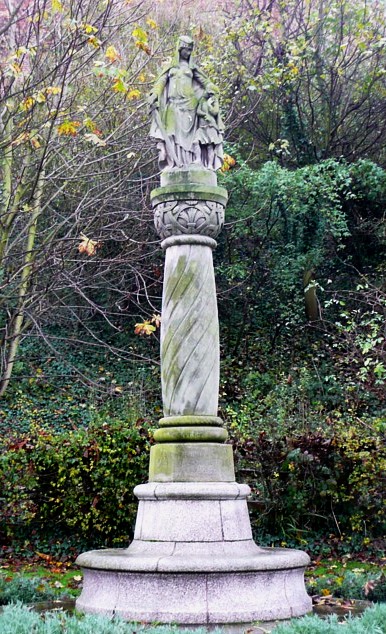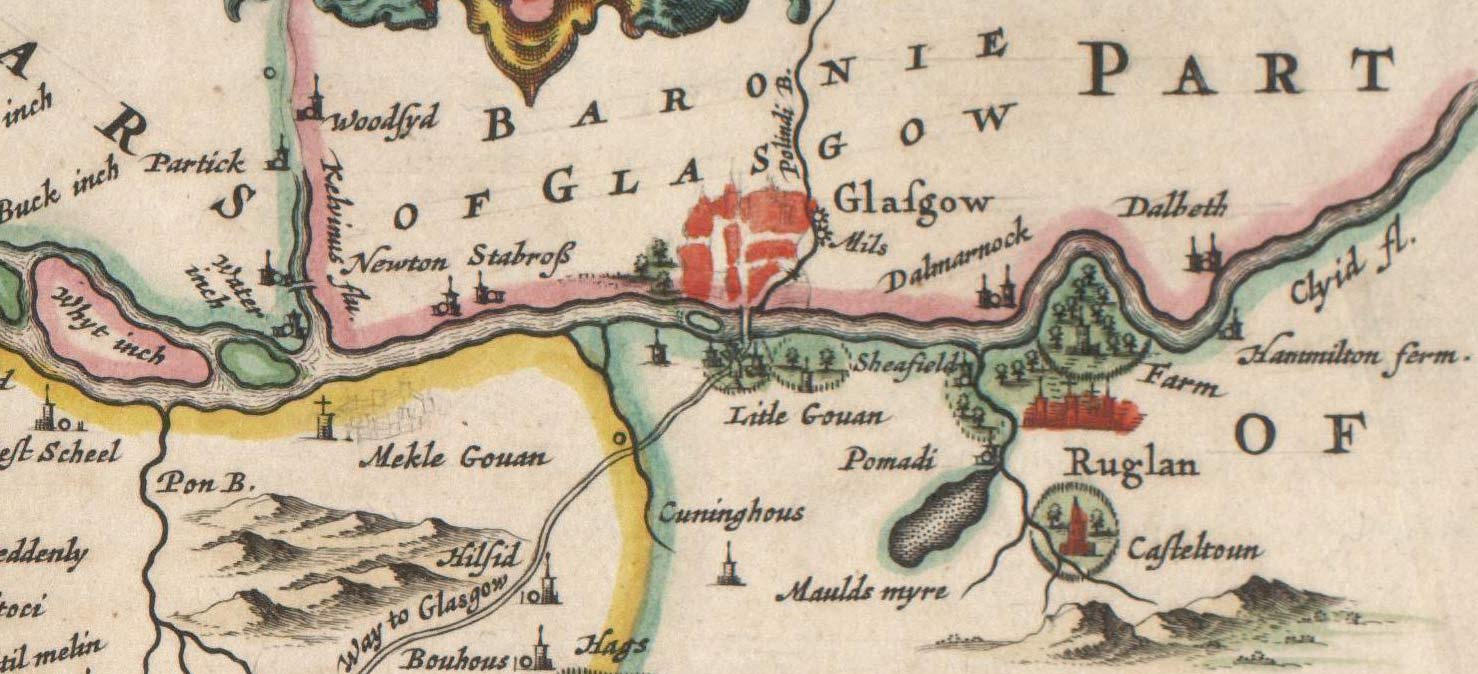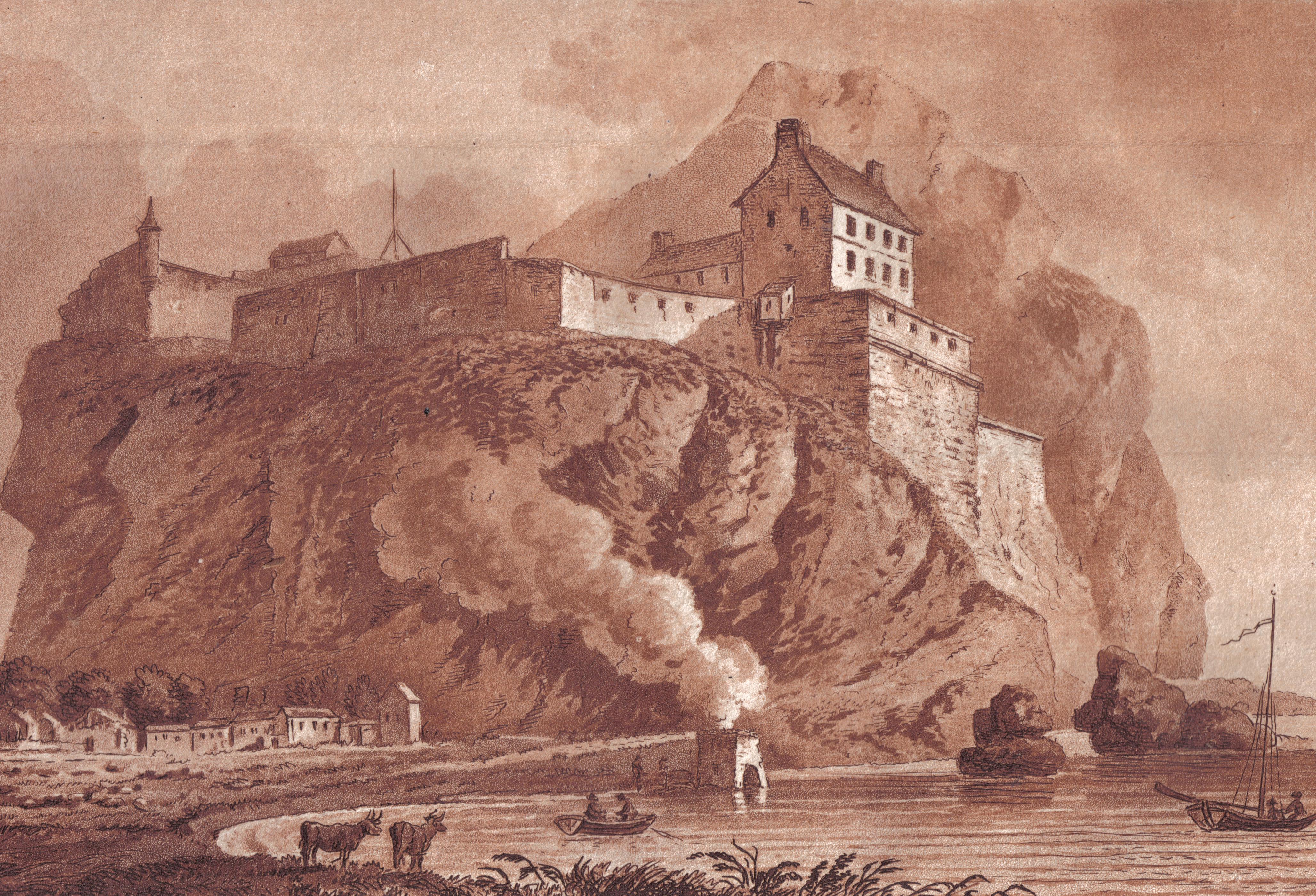|
Owain Ap Dyfnwal (fl. 934)
Owain ap Dyfnwal (fl. 934) was an early tenth-century King of Strathclyde. He was probably a son of Dyfnwal, King of Strathclyde, who may have been related to previous rulers of the Kingdom of Strathclyde. Originally centred in the valley of the River Clyde, this realm appears to have undergone considerable southward expansion in the ninth or tenth century, after which it increasingly came to be known as the Kingdom of Cumbria. Owain may have represented the Cumbrians in the tripartite alliance with the kingdoms of Alba and Mercia, assembled by Æthelflæd, Lady of the Mercians in the second decade of the tenth century. Around this time, the Cumbrians are recorded to have campaigned against either Ragnall ua Ímair or Sitric Cáech. Owain may also be the king of Strathclyde who is recorded to have submitted to Æthelflæd's brother, Edward, King of the Anglo-Saxons, in 920 with Ragnall and Custantín mac Áeda, King of Alba. Moreover, Owain seems to have been present at an ... [...More Info...] [...Related Items...] OR: [Wikipedia] [Google] [Baidu] |
King Of Strathclyde
The list of the kings of Strathclyde concerns the kings of Alt Clut, later Strathclyde, a Brythonic kingdom in what is now western Scotland. The kingdom was ruled from Dumbarton Rock, ''Alt Clut'', the Brythonic name of the rock, until around 870 when the rock was captured and sacked by Norse-Gaels from the kingdom of Dublin after a four-month siege. Thereafter the centre of the kingdom moved to Govan, previously a religious centre. The kingdom is also known as Cumbria after 870, and indeed may have ruled parts of the modern English region of Cumbria in the 10th and 11th centuries. In the 11th century the kingdom of Alba conquered Strathclyde. It remained a distinctive area, with different laws, using the Cumbric language alongside Gaelic, until the 12th century. Kings of Alt Clut Various authorities have suggested a king-list as follows: * Ceretic Guletic (410–450) * Dyfnwal Hen/Dumnagual Hen (450–475) * Erbin (475–480) * Cinuit (480–485) * Gereint (485–490) * ... [...More Info...] [...Related Items...] OR: [Wikipedia] [Google] [Baidu] |
Æthelstan
Æthelstan or Athelstan (; ang, Æðelstān ; on, Aðalsteinn; ; – 27 October 939) was List of monarchs of Wessex, King of the Anglo-Saxons from 924 to 927 and List of English monarchs, King of the English from 927 to his death in 939. He was the son of King Edward the Elder and his first wife, Ecgwynn. Modern historians regard him as the first King of England and one of the "greatest Anglo-Saxon kings". He never married and had no children; he was succeeded by his half-brother, Edmund I. When Edward died in July 924, Æthelstan was accepted by the Mercians as king. His half-brother Ælfweard of Wessex, Ælfweard may have been recognised as king in Wessex, but died within three weeks of their father's death. Æthelstan encountered resistance in Wessex for several months, and was not crowned until September 925. In 927 he conquered the last remaining Viking kingdom, Scandinavian York, York, making him the first Anglo-Saxon ruler of the whole of England. In 934 he invaded ... [...More Info...] [...Related Items...] OR: [Wikipedia] [Google] [Baidu] |
Renfrewshire
Renfrewshire () ( sco, Renfrewshire; gd, Siorrachd Rinn Friù) is one of the 32 council areas of Scotland. Located in the west central Lowlands, it is one of three council areas contained within the boundaries of the historic county of Renfrewshire, the others being East Renfrewshire to the east and Inverclyde to the west. It also shares borders with Glasgow, North Ayrshire and West Dunbartonshire, and lies on the southern bank of the River Clyde. The term Renfrewshire may also be used to refer to the historic county, also known as the County of Renfrew or Greater Renfrewshire, with origins in the 16th century. The larger Renfrewshire, containing Renfrewshire, Inverclyde and East Renfrewshire, remains in use as a registration county and lieutenancy area as well as a joint valuation board area for electoral registration and local tax valuation purposes. The town of Paisley is the area's main settlement and centre of local government and contains the historic coun ... [...More Info...] [...Related Items...] OR: [Wikipedia] [Google] [Baidu] |
Hinterland
Hinterland is a German word meaning "the land behind" (a city, a port, or similar). Its use in English was first documented by the geographer George Chisholm in his ''Handbook of Commercial Geography'' (1888). Originally the term was associated with the area of a port in which materials for export and import are stored and shipped. Subsequently, the use of the word expanded to include any area under the influence of a particular human settlement. Geographic region * An area behind a coast or the shoreline of a river. Specifically, by the ''doctrine of the hinterland,'' the hinterland is the inland region lying behind a port and is claimed by the state that owns the coast. * In shipping usage, a port's hinterland is the area that it serves, both for imports and for exports. * The term is also used to refer to the area around a city or town. * More generally, ''hinterland'' can refer to the rural area economically tied to an urban catchment area. The size of a hinterland can depe ... [...More Info...] [...Related Items...] OR: [Wikipedia] [Google] [Baidu] |
Govan
Govan ( ; Cumbric?: ''Gwovan'?''; Scots: ''Gouan''; Scottish Gaelic: ''Baile a' Ghobhainn'') is a district, parish, and former burgh now part of south-west City of Glasgow, Scotland. It is situated west of Glasgow city centre, on the south bank of the River Clyde, opposite the mouth of the River Kelvin and the district of Partick. Historically it was part of the County of Lanark. In the early medieval period, the site of the present Govan Old churchyard was established as a Christian centre for the Brittonic Kingdom of Alt Clut (Dumbarton Rock) and its successor realm, the Kingdom of Strathclyde. This latter kingdom, established in the aftermath of the Viking siege and capture of Alt Clut by Vikings from Dublin in AD 870, created the sandstone sculptures known today as the Govan Stones. Govan was the site of a ford and later a ferry which linked the area with Partick for seasonal cattle drovers. In the eighteenth and nineteenth centuries, textile mills and coal mini ... [...More Info...] [...Related Items...] OR: [Wikipedia] [Google] [Baidu] |
Partick
Partick ( sco, Pairtick, Scottish Gaelic: ''Partaig'') is an area of Glasgow on the north bank of the River Clyde, just across from Govan. To the west lies Whiteinch, to the east Yorkhill and Kelvingrove Park (across the River Kelvin), and to the north Broomhill, Hyndland, Dowanhill, Hillhead, areas which form part of the West End of Glasgow. Partick was a Police burgh from 1852 until 1912 when it was incorporated into the city.Second City of The Empire: 1830s to 1914 from theglasgowstory.com. Retrieved 22 December 2011. Partick is the area of the city most connected with the , and several Gaelic agencies, such as the Gaelic Books Council ( |
Vikings
Vikings ; non, víkingr is the modern name given to seafaring people originally from Scandinavia (present-day Denmark, Norway and Sweden), who from the late 8th to the late 11th centuries raided, pirated, traded and settled throughout parts of Europe.Roesdahl, pp. 9–22. They also voyaged as far as the Mediterranean Sea, Mediterranean, North Africa, Volga Bulgaria, the Middle East, and Greenland, North America. In some of the countries they raided and settled in, this period is popularly known as the Viking Age, and the term "Viking" also commonly includes the inhabitants of the Scandinavian homelands as a collective whole. The Vikings had a profound impact on the Early Middle Ages, early medieval history of Scandinavia, the History of the British Isles, British Isles, France in the Middle Ages, France, Viking Age in Estonia, Estonia, and Kievan Rus'. Expert sailors and navigators aboard their characteristic longships, Vikings established Norse settlem ... [...More Info...] [...Related Items...] OR: [Wikipedia] [Google] [Baidu] |
Siege Of Dumbarton
The siege of Dumbarton was a successful four-month siege of the Brittonic fortress at Dumbarton Rock in 870, initiated by the Viking leaders Amlaíb, King of Dublin, and Ímar. Dumbarton was capital of the Kingdom of Alt Clut, the only surviving Brittonic kingdom outside of Wales. It represented a valuable target for the Viking invaders, who were likely motivated by strategic considerations, as well as loot. The attackers may have wished to remove Alt Clut as a maritime power, and the location and defensiveness of Dumbarton itself was of major value. The siege lasted four-months, a length of time unprecedented in the history of Viking warfare in the British Isles, and ended when the defenders ran out of water. After the siege numerous prisoners were taken and sold into slavery in Dublin. Following this defeat, the power centre of Alt Clut moved to the vicinity of Govan, and it became known as the Kingdom of Strathclyde. The loss of Dumbarton caused the kingdom to increasingly f ... [...More Info...] [...Related Items...] OR: [Wikipedia] [Google] [Baidu] |
Celtic Britons
The Britons ( *''Pritanī'', la, Britanni), also known as Celtic Britons or Ancient Britons, were people of Celtic language and culture who inhabited Great Britain from at least the British Iron Age and into the Middle Ages, at which point they diverged into the Welsh, Cornish and Bretons (among others). They spoke the Common Brittonic language, the ancestor of the modern Brittonic languages. The earliest written evidence for the Britons is from Greco-Roman writers and dates to the Iron Age.Koch, pp. 291–292. Celtic Britain was made up of many tribes and kingdoms, associated with various hillforts. The Britons followed an Ancient Celtic religion overseen by druids. Some of the southern tribes had strong links with mainland Europe, especially Gaul and Belgica, and minted their own coins. The Roman Empire conquered most of Britain in the 1st century, creating the province of Britannia. The Romans invaded northern Britain, but the Britons and Caledonians in the north r ... [...More Info...] [...Related Items...] OR: [Wikipedia] [Google] [Baidu] |
Al Clud (fortress)
Dumbarton Castle ( gd, Dùn Breatainn, ; ) has the longest recorded history of any stronghold in Scotland. It sits on a volcanic plug of basalt known as Dumbarton Rock which is high and overlooks the Scottish town of Dumbarton. History Dumbarton Rock was formed between 330 and 340 million years ago, during the Early Carboniferous period, a time of widespread volcanic activity in the area where Glasgow is now situated; over time, the softer exterior of the volcano weathered away, leaving behind a volcanic plug of basalt. Iron Age At least as far back as the Iron Age, this has been the site of a strategically important settlement, as evidenced by archaeological finds. The people that came to reside there in the era of Roman Britain were known to have traded with the Romans. However the first written record about a settlement there was in a letter that Saint Patrick wrote to King Ceretic of Alt Clut in the late 5th century. Early Medieval era David Nash Ford has proposed tha ... [...More Info...] [...Related Items...] OR: [Wikipedia] [Google] [Baidu] |
Kingdom Of Al Clud
Strathclyde (lit. "Strath of the River Clyde", and Strað-Clota in Old English), was a Brittonic successor state of the Roman Empire and one of the early medieval kingdoms of the Britons, located in the region the Welsh tribes referred to as Yr Hen Ogledd (“the Old North"), which comprised the Brythonic-speaking parts of what is now southern Scotland and northern England. The kingdom developed during Britain's post-Roman period. It is also known as ''Alt Clut'', a Brittonic term for Dumbarton Castle, the medieval capital of the region. It may have had its origins with the Damnonii people of Ptolemy's ''Geography''. The language of Strathclyde is known as Cumbric, a language that is closely related to Old Welsh, and, among modern languages, is most closely related to Welsh, Cornish, and Breton. Scottish toponymy and archaeology points to some later settlement by Vikings or Norse–Gaels (see Scandinavian Scotland), although to a lesser degree than in neighbouring Galloway ... [...More Info...] [...Related Items...] OR: [Wikipedia] [Google] [Baidu] |
Owain Ap Dyfnwal (map)
Owain ap Dyfnwal may refer to: *Owain ap Dyfnwal (fl. 934) Owain ap Dyfnwal (fl. 934) was an early tenth-century King of Strathclyde. He was probably a son of Dyfnwal, King of Strathclyde, who may have been related to previous rulers of the Kingdom of Strathclyde. Originally centred in the valley of t ..., King of Strathclyde * Owain ap Dyfnwal (died 1015), possible King of Strathclyde {{hndis ... [...More Info...] [...Related Items...] OR: [Wikipedia] [Google] [Baidu] |
.png)


.jpg)


